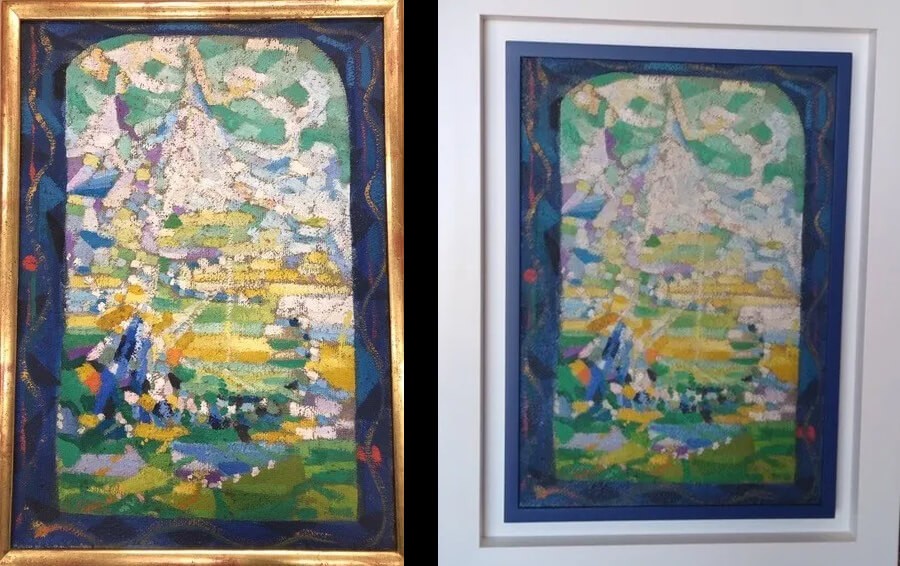Hiding in Plain Sight: Importance of Picture Frames

It’s a great pleasure to share with you our next column on the importance of frames to enhance and safeguard your art, written by Suzanne Smeaton, Certified Member of the Appraisers Association and an expert on frames.
American artist and polymath Charles Willson Peale (1741-1827) said “A good picture deserves a good frame and a bad picture may sometimes preserve its place longer by having a handsome frame.” To be sure, picture frames are a critical component in the care and enjoyment of artworks. In addition to protecting art from potential damage, a frame may both integrate your artwork into the interior aesthetic of your home as well as display the artwork to best effect.
Frames can affect a meaningful change in the viewing experience of an artwork and the reframing process may afford dramatic results. Take, for example, the case of a small oil by Joseph Stella (1877-1946). Framed several decades ago, the art was enclosed by a narrow, yellow-gold frame. (IMAGE 1) The frame was diminutive for such a noteworthy composition and appeared dated. By embracing the painting in a narrow strip of blue and then placing that within a bold, white molding the artwork was transformed and has pride of place in its modern surroundings. (IMAGE 2)View post
There are many frames of historical import. This can be true of frames on artworks from prior centuries as well as those of the present day. For earlier artworks, great care is given to preserving or selecting a frame that is of the same period as the composition. Many 19th century frames are composed of wood substrates with applied, molded ornament known as composition or ‘compo’, then finished with gilded surfaces. Such period-appropriate choices will often enhance the perspective of a depicted landscape by the depth and style of the frame profile. Similarly, a frame can amplify, echo and enhance aspects of the composition.
The early 20th century embrace of technology ushered in new ideas, media and artistic approaches. Frames evolved along with the art: streamlined profiles became popular, and surfaces were painted often by the hand of the artist and frequently silver rather than the traditional yellow gold. As the century progressed Abstract Expressionism and monumental canvases prevailed, and frames nearly disappeared. Yet frames are here to stay. Contemporary artist Kehinde Wiley (b. 1977) occasionally designs frames inspired by historical forms and interprets them to his own ends, changing the scale and replacing historical ornament with witty, modern alternatives that reflect the subject matter of his paintings. His use of an early historical frame is especially powerful on his intimate portraits of young contemporary men in the style of Hans Memling (1430-1494). Each frame is like a piece of furniture, an architectural wood form in warm walnut tones that has small doors that can cover the image much like the frames from the time of the 15th Century Netherlandish artist.
Whatever periods or styles of frames you have in, or seek for your collection, it is essential to seek skilled framers who can guide your selection of a frame, and to work with professionals to repair or restore frames utilizing correct methods and materials. Finally, be sure to engage a certified appraiser who will recognize not only the artworks, but the frames around them and who will know when those frames warrant valuation over and above that of the artwork.
Suzanne Smeaton is a pioneer in the study and scholarship of period frames, working with museums and collectors over several decades. Suzanne conducts frame surveys, is an author on the topic of frames and American frame history, appraises picture frames and is a frequent lecturer for museums and art appreciation groups across the country. Suzanne is a certified member and on the Board of Directors of the Appraiser’s Association of America. For more info, visit suzannesmeaton.com.



